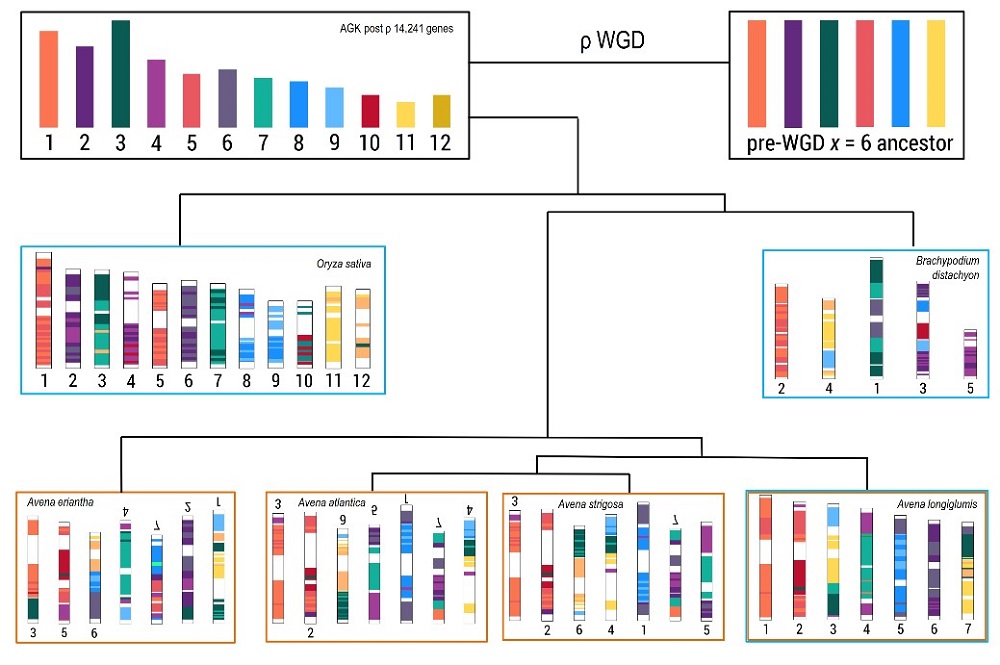Oats were domesticated more than 3,000 years ago while growing as a weed in wheat fields in Turkey. Their genomes are rich in genetic diversity, as evidenced by their large genome size (12.6 Gb, 6x) and the mosaic-like chromosomes. Little is known about the evolutionary events leading to the structural variation of oat chromosomes. However, the diploid wild oat (Avena longiglumis) species have a similar number of genes and are the gene bank for stress resistance, the adaptive traits of oats.
In a recent study published in Scientific Data, Dr. LIU Qing's team from the South China Botanical Garden of the Chinese Academy of Sciences has assembled the genome sequence of wild oat species and conducted a comparative genomics research to deepen our understanding of the origin of the oat genome.
The combination of Illumina, Nanopore and Hi-C data enabled the researchers to assemble a high-quality chromosome-level genome of Avena longiglumis (genome size 3,960.97 Mb). A total of 40,845 protein-coding genes were annotated. The transcriptome data of salt-treated oats were obtained, providing new insights into the evolution of salt-tolerance genes in oats.
Through comparative genomics studies, the researchers have found that the collinear regions were highly conserved in the wild oat species A. longiglumis and A. eriantha (2n = 2x = 14). The terminal gene-rich chromosomal segments (representing about 50 Mb) showed interchromosomal translocations during the speciation of the diploid wild species, and the newly formed intergenomic translocations of similar size were found in the hexaploid A. sativa. The post-Rho polyploidization events were demonstrated to occur in Avena.
The results provide insight into evolutionary mechanisms and speciation in the Pooideae grasses, which is valuable for the exploitation of oat wild germplasm resources through breeding programs in Poaceae.
This study was funded by the National Natural Science Foundation of China, the Guangdong Basic and Applied Basic Research Fund, and the South China Botanical Garden Overseas Distinguished Scholar Project.

Genomic characterization of Avena longiglumis (Image by LIU Qing)
 Reconstruction of ancestral grass karyotype for the Pooideae grasses (Image by LIU Qing)
Reconstruction of ancestral grass karyotype for the Pooideae grasses (Image by LIU Qing)